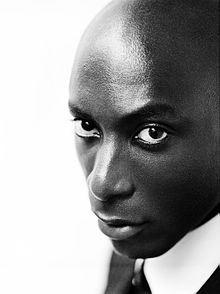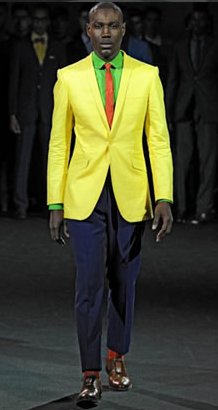The name Ozwald Boateng is one that rings loud in the upper-echelon's of the fashion industry. When it comes to tailoring, the inspiring rags to riches story behind the man is just as riveting as the uniquely iconic and contemporary bespoke tailoring Ozwald Boateng would pioneer and become known for.
Ozwald Boateng’s contemporary addition to traditional British tailoring was heavily inspired by his African roots. Born in North London to Ghanaian immigrants to the UK, he became entangled in his mother’s passion for traditional vibrant African fabrics and his father’s taste for well made suits. The combination of the two would eventually ignite a passion for tailoring as Ozwald went on to take an interest in sewing, cutting and designing.He spent his teenage years selling garments to his fellow students before graduating in fashion and design.
Boateng’s passion for the appreciation of attention to detail being in tune with personal style is one that is still very evident in his work today. Many industry professionals site his ground-breaking incorporation of African-inspired colours, fabrics and designs with a quintessentially British taste for tailoring as one of the main reasons he is held in such high regard within the fashion industry.
It was at the age of 16 when Ozwald Boateng decided to pursue his quest to become an international name in the fashion industry. He became aware of style and established his own by his early twenties, drawing upon the influences of the multi-cultural Notting Hill in London and established designers. The impact of African fashion on what would become Boateng’s trademark style became apparent. Colourful shirts, suits and ties were exceptionally crafted with grave attention to detail in what at the time was a completely revolutionary twist on the conventions of British tailoring.
But his rise to international recognition was not a straightforward one. Boateng was one of only two children of African descent in his school and faced the difficulties of trying to establish himself at the height of civil and racial tensions in the early 80’s in the UK. But he was determined to be set apart from the rest using it as a motivation to inspire his drive to pursue fashion and make a success out of his work.
He went on to open his first studio on Portobello Road. In 1994 he took the biggest step yet to making a stamp on fashion by doing a catwalk show in Paris with the intention of blending a unique traditional style with a modern and at the time ground-breaking approach to tailoring. This would prove to be a decision that would elevate his career. His reputation for ground-breaking was further enhanced when he put together a promotional video for his upcoming fashion show debut, which was revolutionary in itself, to promote a collection for a fashion showcase.
The fashion show was well received and interest from the Japanese market grew from 10,000 orders to a business that was turning over half a million pounds and this eventually allowed Boateng achieve the feat of becoming the first black man to open a store on the prestigious London street Saville Row. For a man who personally recalls standing on Saville Row and dreaming he would one day have his own store on the very same street, his ambitions have been achieved, yet he continues to strive in his quest to constantly push the boundaries of bespoke tailoring. He is inspiring tailors and designers across the world.
Our own Zambian designers can draw inspiration from this story as they begin to impact the world scene.


